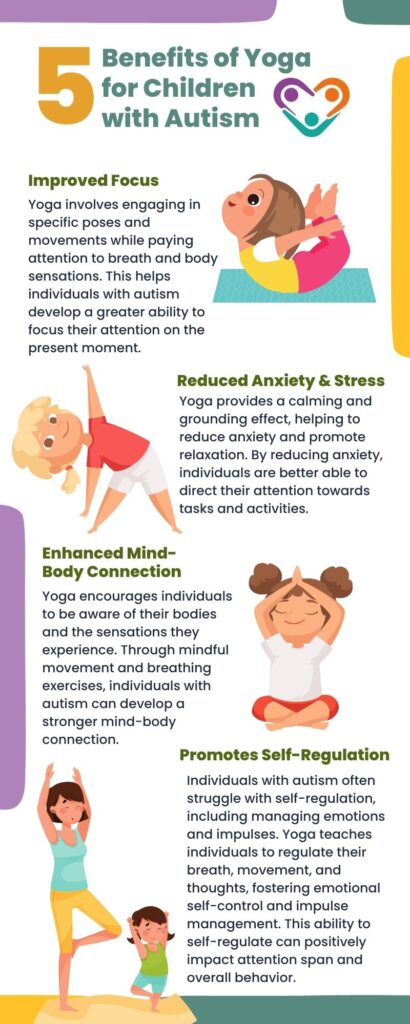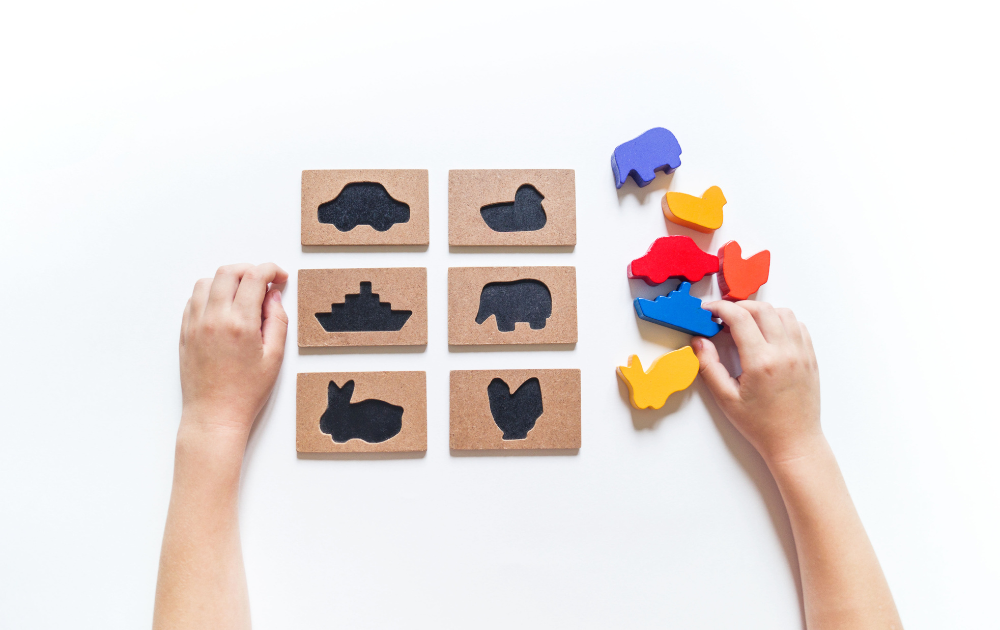
Table of Contents
Children with Autism Spectrum Disorder (ASD) often face challenges when it comes to attention. They may struggle with avoiding unnecessary sensory information and find it difficult to concentrate on one activity. This can lead to distractions, frustration, and a loss of interest in learning. Understanding and addressing these challenges is crucial for supporting the development and improvement of attention in children with ASD.
Challenges in Attention
Children with ASD may experience difficulty in filtering out irrelevant sensory stimuli, such as background noise or visual distractions. This can make it challenging for them to focus on a specific task or activity. Additionally, they may have difficulties with shifting attention, which means they may get stuck on one aspect of a task and have difficulty transitioning to another. These challenges in attention can impact their ability to engage in learning activities and maintain focus for extended periods of time.
Importance of Improving Attention
Improving attention is vital for children with ASD as it plays a crucial role in their overall learning and development. By enhancing attention, children with ASD can better engage with educational materials, participate in social interactions, and acquire new skills. Improved attention can also help reduce frustration and increase motivation, leading to a more positive learning experience.
To address the challenges in attention, various activities can be implemented to help children with ASD improve their focus and concentration. These activities will be explored in the following sections of this article. By providing a supportive environment and utilizing attention-enhancing strategies, parents and caregivers can help their children with ASD develop and strengthen their attention skills.
Activities for Attention Improvement
When it comes to improving attention span in children with autism, engaging in specific activities can be highly beneficial. These activities not only help children focus better but also provide them with opportunities for sensory exploration, creativity, and cognitive development. Here are some activities that can aid in attention improvement:
Sensory Play Activities
Sensory play activities are particularly effective in capturing and maintaining the attention of children with autism. These activities incorporate various sensory elements, such as touch, sight, sound, and smell, to create engaging experiences. Examples of sensory play activities include:
- Glow in the dark play
- Finger painting
- Animal walking
- Tear and blow
- Sound-making activities
By providing a multi-sensory experience, these activities can help children with autism develop and enhance their attention skills.
Art and Craft Engagement
Engaging in art and craft activities can also significantly contribute to attention improvement in children with autism. These activities not only promote concentration but also enhance hand-eye coordination, fine motor skills, memory, and creative expression. Some art and craft activities that can help improve attention span include:
- Coloring
- Drawing
- Cutting and pasting
By encouraging children to focus on completing art projects, these activities provide a structured and enjoyable way to enhance attention skills.
Memory Games
Memory games are an excellent way to improve attention span in children with autism. These games require concentration and focus, as they involve remembering and matching different elements. Some examples of memory games that can be beneficial include:
- Matching flashcards
- Board games that involve memory skills
- Regular deck of cards for memory-based games
Engaging in these activities regularly can have a positive impact on attention improvement in children with autism. It’s important to create a supportive and nurturing environment that allows children to explore, learn, and develop at their own pace. Remember to provide clear instructions, reinforce positive behavior, and tailor activities to suit the individual needs and interests of the child.
Interactive Media Engagement
When it comes to improving attention span in individuals with autism, interactive media can be a powerful tool. Activities such as engaging with audiovisual books and learning apps can capture the interest of children with autism and help them focus for longer periods of time. Let’s explore how these interactive media activities can be beneficial for attention improvement.
Audiovisual Books
Audiovisual books combine the auditory and visual senses to create an immersive reading experience. For children with autism, audiovisual books can be particularly effective in holding their attention and improving their focus. The combination of engaging visuals, captivating storytelling, and audio cues can help children with autism understand emotional cues associated with various vocal tones.
By providing a multi-sensory experience, audiovisual books can enhance engagement and sustain attention. These books can be accessed through various platforms, including mobile devices and online platforms, making them easily accessible to parents and caregivers. Incorporating audiovisual books into daily routines can stimulate a child’s imagination, promote language development, and improve attention span.
Learning Apps
Learning apps designed specifically for children with autism can be a valuable resource for attention improvement. These apps offer interactive and engaging content that is tailored to the unique learning needs of individuals with autism. They often incorporate visual and auditory elements, interactive games, and personalized feedback to keep children engaged and focused.
Learning apps can cover a wide range of educational topics, including language skills, math, problem-solving, and social interaction. The interactive nature of these apps encourages active participation and can help children with autism stay focused for longer periods of time. Moreover, these apps can be customized to match the individual’s learning pace and abilities, providing a personalized learning experience.
By leveraging the power of interactive media, such as audiovisual books and learning apps, parents and caregivers can support attention improvement in children with autism. These activities not only capture the child’s interest but also provide valuable learning opportunities. However, it’s important to ensure that the content and duration of interactive media engagement are appropriate for the child’s age and developmental stage.
Remember, interactive media should be used as a tool to complement other activities and therapies aimed at improving attention and overall development in individuals with autism. By incorporating a variety of strategies and interventions, parents and caregivers can create a supportive environment that promotes attention improvement and enhances the overall well-being of their child.
Yoga for Attention Control
Yoga is a powerful and holistic practice that can have numerous benefits for individuals with autism, including improving attention control. The practice of yoga combines physical postures, breathing exercises, and mindfulness techniques to promote overall well-being. When it comes to attention improvement in individuals with autism, yoga can be a valuable tool.
Benefits of Yoga
Practicing yoga has been found to have a positive impact on attention control in individuals with autism. A study published in the American Journal of Occupational Therapy showed that yoga can help control aggressive behavior, social withdrawal, and hyperactivity in children with autism. Here are some of the key benefits of incorporating yoga into the routine of individuals with autism:
It’s important to note that yoga should be practiced under the guidance of a qualified instructor who has experience working with individuals with autism. They can tailor the yoga practice to suit the specific needs and abilities of each individual. Additionally, parental involvement and support are crucial in integrating yoga into the daily routine of individuals with autism.
By incorporating yoga into the lives of individuals with autism, parents and caregivers can help promote attention control, reduce anxiety, and support overall well-being. It is just one of the many strategies that can be utilized to provide holistic care for individuals with autism.
Mirror Play for Attention
When it comes to improving attention in children with autism, engaging them in activities that capture their interest and promote focus is essential. One such activity that has shown promising results is mirror play. Mirror play involves mimicking actions in front of a mirror, providing a visual feedback loop that can enhance concentration and attention skills.
Enhancing Concentration through Mirroring
Children with autism often find attention to be a challenging skill, as they may struggle with avoiding unnecessary sensory information and staying focused on a specific task or activity. This difficulty can lead to distractions, frustration, and a loss of interest in learning. Mirror play can be a valuable tool in addressing these challenges and improving attention.
Engaging in mirror play activities provides a visual stimulus that captures the child’s interest and encourages sustained focus. By observing their own actions and movements in the mirror, children with autism can develop self-awareness and improve their ability to attend to tasks. The visual feedback loop created by the mirror helps them stay engaged and focused on the activity at hand.
Research suggests that mirror play can be an effective tool for improving attention and concentration in children with autism. Studies have found that the use of mirrors in therapy sessions increases attention and engagement in children with autism spectrum disorder (ASD). By incorporating mirror play into their daily routines, parents and caregivers can provide a structured and enjoyable activity that promotes attention and self-awareness.
Mirror play activities can be simple and tailored to the child’s interests and abilities. For example, parents can encourage their child to imitate facial expressions, gestures, or movements in front of the mirror. This not only promotes attention and concentration but also supports social and emotional development.
It’s important to note that mirror play should be introduced gradually and in a supportive environment. Each child is unique, and it’s essential to consider their individual needs and preferences. By incorporating mirror play into their routine, parents and caregivers can provide a valuable tool for improving attention and concentration in children with autism.
Shape and Color Sorting
Sorting activities that involve shapes and colors can be a valuable tool for enhancing attention and concentration skills in children with autism spectrum disorder (ASD). These activities provide an engaging and interactive way for children to develop their cognitive abilities while improving their attention span.
Skill Development through Sorting Activities
Shape and color sorting activities can help children with ASD develop their concentration skills by starting with simple sorting tasks and gradually increasing complexity. These activities involve grouping objects based on their shape or color, allowing children to focus on specific attributes and make connections between visual stimuli.
By engaging in shape and color sorting activities, children with autism can experience the following skill development benefits:
- Attention and Focus: Sorting activities require children to pay attention to details, categorize objects, and discriminate between different shapes and colors. This helps improve their ability to sustain attention and stay focused on a specific task.
- Visual Discrimination: Sorting objects based on shape or color requires children to visually discriminate between different attributes. This enhances their ability to distinguish and recognize visual differences, which is an essential skill for various learning tasks.
- Problem-Solving: Sorting activities present children with challenges that require them to use problem-solving skills. They need to determine which objects belong to specific categories and figure out the appropriate sorting strategy. This promotes critical thinking and cognitive flexibility.
- Cognitive Flexibility: As children progress to more complex sorting tasks, they learn to switch between different rules or categories. This promotes cognitive flexibility and adaptability, crucial skills for academic and daily life tasks.
To make shape and color sorting activities more engaging, parents and caregivers can incorporate a variety of materials such as blocks, toys, or flashcards. Start with simpler tasks, focusing on one attribute at a time, and gradually introduce more complex sorting challenges that incorporate both color and shape concepts.
Remember, each child with autism is unique, and it’s important to tailor the activities to their specific abilities and interests. Celebrate their progress and provide positive reinforcement to motivate continued engagement.
Sources:
https://www.autispark.com/attention-activities-for-kids-with-autism/
https://www.autispark.com/attention-activities-for-kids-with-autism/
https://www.angelsense.com/blog/5-activities-to-help-your-special-child-concentrate-better/
- Autism Triggers: What to Watch Out for - April 29, 2024
- Autism Stress Relievers and Calming Strategies - April 29, 2024
- Autism Routine Disruption Coping Strategies - April 28, 2024





